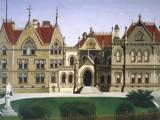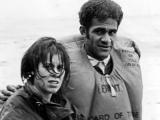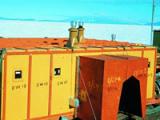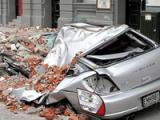Forty-seven tourists and guides were on Whakaari (White Island) in Bay of Plenty when the active volcano erupted at 2.11 p.m. Twenty-two died immediately or subsequently from burns or respiratory damage. Most of the survivors suffered severe or critical injuries.
Disasters
Events In History
At 12.51 p.m. on Tuesday 22 February 2011, a magnitude 6.3 earthquake caused severe damage in Christchurch and Lyttelton, killing 185 people and injuring several thousand.
The mine exploded at 3.44 p.m. on Friday 19 November 2010. Twenty-nine of the 31 men underground died immediately or soon afterwards from the blast or because of the toxic atmosphere this generated.
The earthquake which struck at 4.35 a.m. on a Saturday morning was felt by many people in the South Island and southern North Island. There was considerable damage in central Canterbury, especially in Christchurch, but no loss of life.
On 4 September 2010 a plane crashed soon after taking off from Fox Glacier airstrip, killing all nine people on board. The Walter Fletcher FU-24 was piloted by 33-year-old Chaminda Senadhira and carried four skydiving instructors and four skydivers who were touring the West Coast on a Kiwi Experience bus trip.
An Air NZ Airbus A320 crashed off the coast of France. All seven people on board, including five New Zealanders, were killed. It was 29 years to the day since Air NZ Flight TE901 had crashed in Antarctica, killing all 257 on board
Six students and a teacher from Elim College died in a flash flood while canyoning in the Mangatepopo Stream, Tongariro National Park.
Fourteen people standing on a viewing platform at Cave Creek in Paparoa National Park on the West Coast died when it suddenly collapsed and fell into the creek-bed below.
Cyclone Bola, one of the most damaging cyclones to hit New Zealand, struck Hawke’s Bay and Gisborne–East Cape in March 1988
At 5.37 p.m. on 16 February 1986, the Soviet cruise liner Mikhail Lermontov hit rocks off Cape Jackson in the Marlborough Sounds.
A record one-day total of up to 84.8 mm of rain caused extensive surface flooding in the streets of Invercargill, Riverton, Ōtautau, Tūātapere and Bluff.
On the morning of 28 November 1979, Air New Zealand Flight TE901 left Auckland for an 11-hour return sightseeing flight to Antarctica. At 12.49 p.m. (New Zealand Standard Time), the aircraft crashed into the lower slopes of Mt Erebus, killing all 257 passengers and crew.
A magnitude 7.1 earthquake centred near Īnangahua Junction, 40 km east of Westport, struck at 5.24 a.m., shaking many people from their beds.
The sinking of the Lyttelton–Wellington ferry Wahine is New Zealand’s worst modern maritime disaster. Fifty-one people lost their lives that day, another died several weeks later and a 53rd victim died in 1990 from injuries sustained in the wreck.
Nineteen men were killed when an explosion ripped through the Strongman coal mine at Rūnanga. An inquiry found that safety regulations had not been followed and a shot hole for a charge had been incorrectly fired.
The 1963 crash of a National Airways Corporation DC3, with the loss of all 23 people on board, remains the worst air accident within New Zealand.
Fifteen people were killed and 21 injured, many severely, when a bus returning to Auckland from Waitangi Day celebrations in the presence of Queen Elizabeth II and Prince Philip lost its brakes on Brynderwyn hill
All hands were lost when the modern coastal freighter Holmglen foundered off the South Canterbury coast. The cause of the tragedy was never established.
The worst railway disaster in New Zealand’s history occurred on Christmas Eve 1953, when the Wellington–Auckland night express plunged into the flooded Whangaehu River, just west of Tangiwai in the central North Island.
The TSS Wahine was chartered by the New Zealand government to transport Kayforce troops to the Korean War. Shortly after leaving Darwin it ran aground on Masela Island in the Arafura Sea, east of Timor.
Twenty yachts left Wellington for Lyttelton in a race to celebrate Canterbury's centenary. The fleet ran into a severe southerly storm and only one yacht officially finished the race. Two others were lost, along with their 10 crew members.
The Lockheed Electra airliner ZK-AGK Kaka went missing in poor weather on a flight from Palmerston North to Hamilton. Searchers did not reach the wreckage for a week.
Three people were killed, 80 injured and about 150 buildings destroyed or badly damaged by New Zealand’s deadliest recorded tornado. The damage was estimated at more than £1 million (equivalent to $77 million in 2020).
On 18 November 1947 Ballantynes, a Christchurch department store that was a local institution, was razed by the deadliest fires in New Zealand history. The bodies of the 41 victims were buried at Ruru Lawn Cemetery, Bromley, after a civic funeral five days later.
The fire in Christchurch’s prestigious department store was the deadliest in New Zealand’s history.
The liner, carrying 400 passengers, struck Barrett Reef in Wellington Harbour on 19 January. Only an unusually long spell of calm weather - dubbed 'Wanganella weather' by locals - saved it from becoming a total wreck.
Ten United States Navy personnel drowned off the Kāpiti Coast, north of Wellington, during a training exercise in bad weather.
The Cromwell–Dunedin express, travelling at speed, derailed while rounding a curve near Hyde in Central Otago.
In New Zealand’s worst naval tragedy, the Royal Navy cruiser HMS Neptune struck enemy mines and sank off Libya. Of the 764 men who lost their lives, 150 were New Zealanders.
Disaster struck during the hurried evacuation of Allied forces from Greece when hundreds of civilians and Commonwealth troops, including New Zealanders, were killed while they were boarding the Greek yacht Hellas at the port of Piraeus, near Athens.
Twenty men and one woman drowned when a cloudburst sent a wall of water surging through a public works camp in the Kōpuawhara Valley, near Māhia.
The engineer-in-charge and the overseer were killed when the second avalanche to hit the Homer tunnel project in less than 12 months struck without warning.
All three people on board a Dominion Airlines Desoutter died when it crashed near Wairoa in northern Hawke’s Bay.
When the earthquake, measuring 7.8 on the Richter scale, struck at 10.47 a.m., many buildings in central Napier and Hastings collapsed.
The Auckland−Wellington express ploughed into a huge slip that had slumped across the tracks at Ōngarue, north of Taumarunui in King Country.
Ten New Zealand soldiers were killed when they were hit by a train at Bere Ferrers in southern England. The accident occurred as troops from the 28th Reinforcements for the NZ Expeditionary Force were being transported from Plymouth to Sling Camp on Salisbury Plain.
The sinking of the transport ship Marquette in the Aegean Sea in late 1915 added to the grief of a nation still reeling from the heavy losses at Gallipoli.
At 7.20 a.m. an explosion at Ralph's mine on Raynor Rd rocked Huntly. It was caused by a miner's naked acetylene cap-lamp igniting firedamp (methane gas given off by coal)
On 10 September 1914, 10 miners working on Whakaari (White Island) were killed when part of the crater wall collapsed, causing a landslide
Although no New Zealanders were aboard the world’s largest passenger ship when it sank in the chilly North Atlantic with appalling loss of life, the country followed the news closely.
The Picton-Wellington ferry SS Penguin struck rocks in Cook Strait and sank in heavy seas off a rugged, isolated coast. Only 30 of the 102 people on board survived.
At 9.30 a.m., an explosion tore through the Brunner mine in Westland’s Grey Valley. Two men sent underground to investigate were later found unconscious after inhaling black damp, a suffocating mixture of nitrogen and carbon dioxide.
It remains the third deadliest shipwreck ever in New Zealand waters: 121 lives were lost when the steamer Wairarapa struck Miners Head, the north-west point of Great Barrier Island, 90 km north-east of Auckland.
The eruption lasted six hours and caused massive destruction. It destroyed several villages, along with the famous silica hot springs known as the Pink and White Terraces. Approximately 120 people, nearly all Māori, died.
Four children were killed and 13 adults injured when two rail carriages were blown off the tracks by severe winds on a notoriously exposed part of the Remutaka incline railway. This was the first major loss of life on New Zealand’s railways.
On the morning of 21 February 1879, an explosion rocked the coal mine at Kaitangata, South Otago.
The ‘Great Flood’ of 1878 killed at least three people and thousands of animals as it swept across the southern South Island
En route to Auckland laden with immigrants, the Cospatrick caught fire off the Cape of Good Hope. The tragedy has been described as New Zealand's worst civil disaster.
An ex-tropical cyclone swept south across the country from Saturday 1st. By the time it moved away on Tuesday 4th, more than 40 people had died.
Sailing from Melbourne to London, the General Grant hit cliffs on the west coast of the main island in the subantarctic Auckland Islands. Fifteen of the 83 people on board survived the sinking, but only 10 of them were ultimately rescued 18 months later.
The paddle steamer City of Dunedin left Wellington at around 5 p.m. on Saturday 20 May. It was never heard from again and no trace was ever found of the four dozen people on board.
For the British it was the costliest day of the New Zealand Wars – but it occurred far from the battlefield. Bringing naval stores from Sydney, the modern 1706-ton steam corvette HMS Orpheus ran aground on the bar at the entrance to Auckland’s Manukau Harbour.
The magnitude 8.2 earthquake had a profound impact on the development of Wellington city.
Twenty-six lives were lost when the barque Maria was wrecked near Cape Terawhiti. This provided more ammunition for Wellington settlers who were trying to convince the government of the need for a lighthouse.
A devastating landslide obliterated the Ngāti Tūwharetoa village of Te Rapa on the south-west shore of Lake Taupō.
The fate of the brig Sophia Pate, wrecked on a sandbar at the entrance to Kaipara Harbour with the loss of 21 lives, highlighted the dangers of navigating New Zealand’s poorly charted coastal waters.
Articles
Parliament Buildings

Parliament buildings have been modified, destroyed by fire, half-built and restored; the parliamentary places and spaces have formed an important part of New Zealand's history. Read the full article
Page 8 - Disasters
Fires and earthquakes have been major threats to New Zealand's Parliament
Responding to tragedy

How police responded to the disasters, particularly Tangiwai, Wahine and Erebus Read the full article
Page 1 - Police response to disaster
How police responded to the disasters, particularly Tangiwai, Wahine and Erebus
Tangiwai disaster
New Zealand's worst railway disaster occurred 60 years ago on Christmas Eve 1953, when the Wellington–Auckland night express plunged into the swollen Whangaehu River near Tangiwai. Of the 285 people on board, 151 were killed. The tragedy stunned the world and left a nation in mourning. Read the full article
Page 1 - Tangiwai railway disaster
New Zealand's worst railway disaster occurred 60 years ago on Christmas Eve 1953, when the Wellington–Auckland night express plunged into the swollen Whangaehu River near
Page 2 - Wrong place at the wrong time
The unfortunate sequence of events that led to the Tangiwai
Page 3 - Search and rescue
How locals and police responded to New Zealand's worst railway disaster
Page 4 - Dealing with the dead
Identifying victims is a major task following any mass tragedy. A number of circumstances made this process particularly difficult at
Page 5 - Death at Tangiwai: a class affair
Survival at Tangiwai depended on which class of carriage you were travelling
New Zealand disasters timeline

The disasters timeline and map give an overview of New Zealand's worst natural disasters, transport accidents, fires, mining accidents and other tragedies that have caused major loss of life. Read the full article
Page 1 - New Zealand disasters timeline
The disasters timeline and map give an overview of New Zealand's worst natural disasters, transport accidents, fires, mining accidents and other tragedies that have caused major
Page 2 - Further information
Links Mining accidents Natural hazards and disasters Shipwrecks New Zealand disasters map and timeline
Wahine disaster

This April marks the 45th anniversary of the sinking of the ferry Wahine. With more than 50 lives lost, this was New Zealand's worst modern maritime disaster. The Wahine’s demise on 10 April 1968 also heralded a new era in local television, as pictures of the disaster were beamed into living rooms around the country. Read the full article
Page 1 - The Wahine disaster
This April marks the 45th anniversary of the sinking of the ferry Wahine. With more than 50 lives lost, this was New Zealand's worst modern maritime disaster. The Wahine’s demise
Page 2 - Timeline to tragedy
The events that led to the drowning of 51 people in the Wahine disaster of 10 April
Page 3 - Co-ordinating the rescue
The police, emergency services and civilians rescued passengers and crew from the inter-island ferry Wahine in Wellington Harbour in April
Page 4 - Court of inquiry
The court of inquiry that met 10 weeks after the sinking pinpointed the build-up of water in the vehicle deck as the reason the ferry finally
Erebus disaster

On 28 November 1979, 237 passengers and 20 crew were killed when Air New Zealand Flight TE901 crashed into Mt Erebus, Antarctica. The tragedy was followed by a demanding recovery operation and a raging debate over who or what was to blame Read the full article
Page 1 - Erebus disaster
On 28 November 1979, 237 passengers and 20 crew were killed when Air New Zealand Flight TE901 crashed into Mt Erebus, Antarctica. The tragedy was followed by a demanding recovery
Page 2 - Tourist flights to Antarctica
Air New Zealand and Qantas began offering sightseeing flights to Antarctica in February
Page 3 - Timeline to disaster
The Erebus disaster was mainly caused by a late change in the flight path and atmospheric conditions over
Page 5 - Operation Overdue
A team of New Zealand Police officers and a Mountain Face Rescue Team were immediately dispatched to the scene of the Erebus disaster.
Page 6 - Finding the cause
Following the death of so many people, it was not surprising that official investigations of the tragedy sparked debate and
Disasters
Social studies activities relating to NZ disasters exploring whether or not things may have turned out differently had other decisions been made. Read the full article
Page 1 - What could have been done differently?
Social studies activities relating to NZ disasters exploring whether or not things may have turned out differently had other decisions been
Antarctica and New Zealand

NZ and Antarctica share a long and rich history. From Tuati in 1840 to Edmund Hillary in the 1950s and more recent scientists, Kiwis have explored, examined and endured the frozen continent. Read the full article
Page 3 - Triumph and tragedy
There is a New Zealand connection to a number of triumphs and tragedies that have occurred in
The 1960s
Five decades ago most Kiwis enjoyed a standard of living that was the envy of other nations. During the 1960s the arrival of TV and jet airliners shrank our world, and New Zealanders began to express themselves on a range of international issues, including opposition to the Vietnam War. Read the full article
Page 9 - 1966 - key events
A selection of the key events in New Zealand history from
Page 10 - 1967 - key events
A selection of the key events in New Zealand history from
Page 11 - 1968 - key events
A selection of the key events in New Zealand history from
Container shipping
Forty-five years ago, on 19 June 1971, the first all-container ship to visit New Zealand arrived in Wellington. Columbus New Zealand was part of a worldwide revolution in shipping. These simple steel boxes would change our transport industry, our ports and how we work and shop. Read the full article
Page 7 - The wreck of the Rena
On 5 October 2011 the MSC-chartered, Liberian-flagged container ship Rena astonished local mariners by grounding on the clearly marked Astrolabe Reef off Tauranga. Three months
2010 Canterbury (Darfield) earthquake

At 4.35 a.m. on 4 September 2010, the Canterbury region was struck by a magnitude 7.1 earthquake. It shook Cantabrians, their properties, their land and their lives. Read the full article
Page 1 - September 2010 Canterbury (Darfield) earthquake
At 4.35 a.m. on 4 September 2010, the Canterbury region was struck by a magnitude 7.1 earthquake. It shook Cantabrians, their properties, their land and their
Page 2 - Timeline: 4-16 September 2010
Detailed timeline of events relating to the Canterbury earthquake on and after 4 September
Pike River mine disaster
On the afternoon of 19 November 2010, an explosion ripped through the remote Pike River mine on the West Coast of the South Island, killing 29 men. Read the full article
Page 1 - Pike River mine disaster
On the afternoon of 19 November 2010, an explosion ripped through the remote Pike River mine on the West Coast of the South Island, killing 29
February 2011 Christchurch earthquake
At 12.51 p.m. on 22 February 2011, the Canterbury region was struck by a magnitude 6.3 earthquake. It caused massive devastation in most parts of the region and 185 lives were lost. Read the full article
Page 1 - February 2011 Christchurch earthquake
At 12.51 p.m. on 22 February 2011, the Canterbury region was struck by a magnitude 6.3 earthquake. It caused massive devastation in most parts of the region and 185 lives were































































































































































































